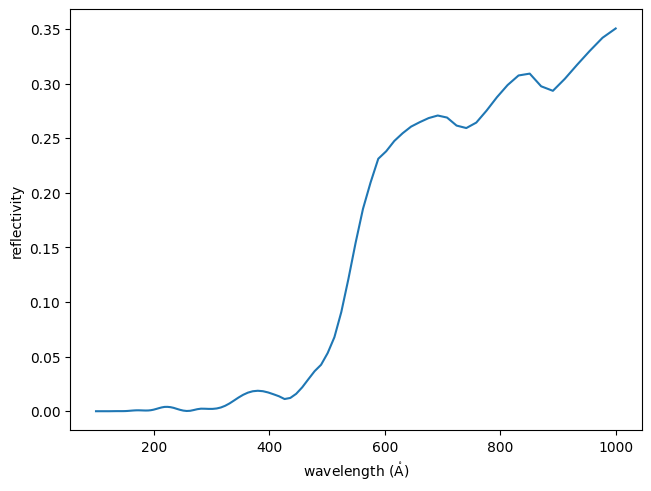multilayer_design#
- esis.flights.f1.optics.primaries.materials.multilayer_design()#
The as-designed multilayer coating for the ESIS primary mirror.
Examples
Plot the efficiency of the coating across the EUV range
import matplotlib.pyplot as plt import astropy.units as u import named_arrays as na import optika from esis.flights.f1.optics import primaries # Define an array of wavelengths with which to sample the efficiency wavelength = na.geomspace(100, 1000, axis="wavelength", num=101) * u.AA # Define the incident rays from the wavelength array rays = optika.rays.RayVectorArray( wavelength=wavelength, direction=na.Cartesian3dVectorArray(0, 0, 1), ) # Initialize the ESIS primary mirror material material = primaries.materials.multilayer_design() # Compute the reflectivity of the primary mirror reflectivity = material.efficiency( rays=rays, normal=na.Cartesian3dVectorArray(0, 0, -1), ) # Plot the reflectivity vs wavelength fig, ax = plt.subplots(constrained_layout=True) na.plt.plot(wavelength, reflectivity, ax=ax); ax.set_xlabel(f"wavelength ({wavelength.unit:latex_inline})"); ax.set_ylabel("reflectivity");

- Return type:

